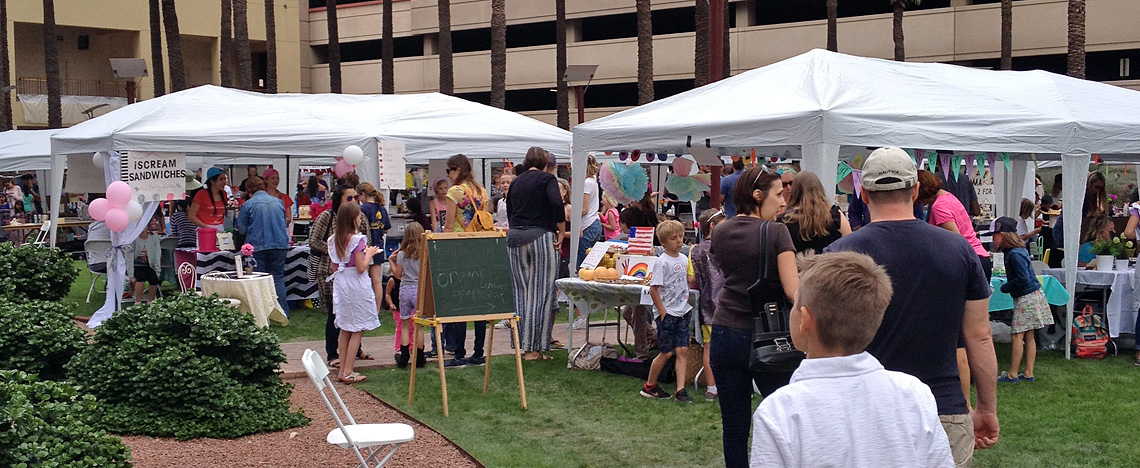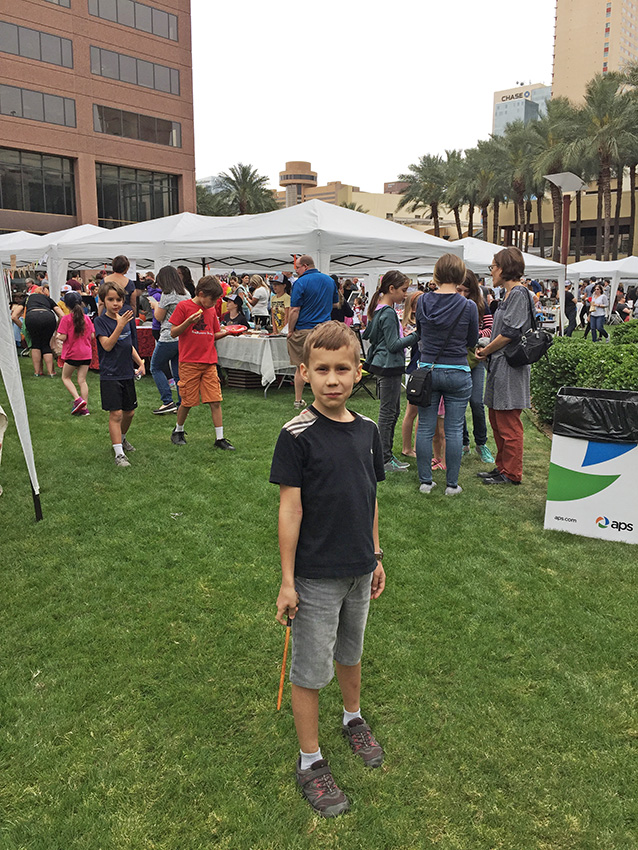
Business Fair
Recently, we had an air temperature of +51 °C, and the Central Phoenix airport was closed. But Phoenix is a metropolitan area with a population of more than four million people. The city of Phoenix is the center of this metropolis with a population of about 1.5 million people. Many subcities adjoin it, which do not have clearly defined borders, and even streets and roads have continuous numbering and names. These are cities such as Scottsdale, where we now live, Cave Creek, where we used to live, Mesa, Gilbert, Glendale, Tempe, Chandler, Peoria and others. Taking into account the fact that there are almost no high-rise residential buildings, and high-rise buildings are found only in the central part of cities, the length of this metropolis is very large. It is clear that the air temperature can vary by 1 – 2 degrees, and when it rains in one of the subcities, the sun can shine in another.
Well, now, I want to talk about one feature of the Americans. Since childhood, they try to instill in their children a spirit of entrepreneurship and a commercial streak. So, a business fair for children was organized in the downtown of Phoenix when a school year was still on and there was no such heat on the streets. Such a fair is held annually and children of different ages sell their handicrafts there. The child has to independently participate in the process of manufacturing these products from start to finish as a prerequisite to get in there. We were wondering what these little businessmen could sell.
We arrived at the middle of the event. Tents with tables were set up in a small park, where children and their parents were selling their products. There were cookies, cakes, some drinks. But besides edible things, they sold beads, woven baubles, rings, frames and stands for photos, crafts made from shells, paintings and picture frames, shelves, t‑shirts with a pattern and much more sundries. We walked, looked, bought a jar of honey and honeycombs to support start-up entrepreneurs. Grandson bought himself a Harry Potter wand and was concerned about what he could trade. I offered him to make crafts from huge amount of Lego parts, which he has a whole box, and sell them. He is very good at building spaceships, inventing them from his head. But he said it didn’t suit him because he didn’t want to get rid of his Legos.
However, the idea ofmaking money did not leave him. He agreed with his mother that he will remove all the seed pods from the front-yard tree for $20. An indispensable condition was that I would help him (of course, for free). We were walking one day and I said: “Oh, the pods started to fall.” And he said,“and my money!” I look at all this and think, is it good or bad? With my Soviet remnants of the past, I can’t get used to this approach and always criticize. Even my daughter is a little offended by me for this, that I never supported her in any commercial endeavors. I always put forward a bunch of counterarguments why this or that business should not be done. So I suppressed the entrepreneur in my child.
The spirit of entrepreneurship is brought up here even at school. For example, my sister told me that her children in history class were asked to describe an ancient castle from the position of a realtor to sell this castle.












